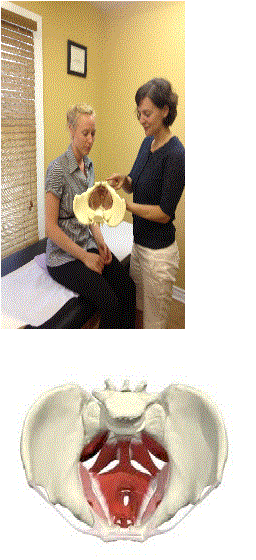Identifying Pelvic Floor Dysfunctions
Reference:Submitted by: Carolyn Vandyken, PT & Nelly Faghani, PT
Orthopaedic therapists routinely prescribe Kegel exercises for core and pelvic floor dysfunction. Kegels are usually given without assessing the pelvic floor muscle strength or tightness first. PTs everywhere would be critical of such a practice elsewhere in the body. Should this routine practice continue for the pelvic floor?
Research shows that women with chronic low back pain (LBP) have an accompanying 78% pelvic floor dysfunction. A 5-year prospective study on almost 40 000 women showed that the strongest co-morbid factors in chronic LBP are pelvic floor dysfunction and respiratory dysfunction.
A poster presentation at the First World Congress on Abdominal-Pelvic Pain in Amsterdam (2013) involving 1600 patients demonstrated that in both LBP and pelvic pain, 57% of women and 36% of men complain of concurrent pelvic floor dysfunction. Could pelvic floor dysfunction be a major and overlooked driver of chronic LBP and pelvic girdle pain?
So, why don’t we just do more Kegels?
Simply put, pelvic floor dysfunction is a general term used for both hypertonic and hypotonic muscular problems. There may also be fascial problems, as well as neural tension challenges in the pelvic floor, which will be aggravated by doing Kegels.
Ideally every orthopaedic PT should be able to identify the patient’s who need pelvic floor strengthening versus those who need pelvic floor lengthening. However, our training programs do not specifically address this issue unless you have taken the appropriate courses to assess the pelvic floor through internal palpation. This needs to change!
Medically and therapeutically we are divided into specialties. The orthopaedic PTs often under-represents the pelvic floor and the pelvic floor physiotherapist may too closely focus on these structures alone. The pelvic floor needs to have its rightful place back in the body, with all PTs and medical specialists considering its role accurately in both orthopaedic and gynecological problems.
There is a key role for all PTs to accurately assess and treat pelvic floor dysfunction, knowing when to refer to a subspecialist and whom to treat in-house.
Posted on: September 26, 2013
Categories: SI & Pelvis


